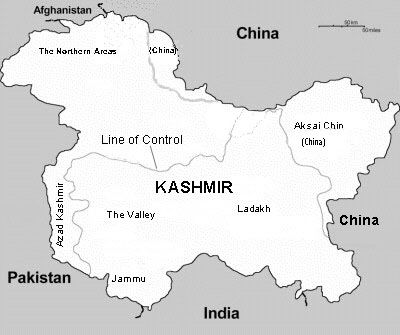Tourists flock back to Kashmir
 Srinagar, July 12 : Not long ago, people on flights from Delhi to Srinagar were government officials, local businessmen or journalists. Years of fighting between separatist militants and security forces had created a feeling that it was unsafe to travel to the region and tourists stayed away but now travellers are back in numbers.
Srinagar, July 12 : Not long ago, people on flights from Delhi to Srinagar were government officials, local businessmen or journalists. Years of fighting between separatist militants and security forces had created a feeling that it was unsafe to travel to the region and tourists stayed away but now travellers are back in numbers.
The streets of Srinagar are buzzing - shops are open until late at night, tourists who shunned the picturesque valley for many years are now back in their hundreds of thousands, and morale is high.
"The situation is much better in Kashmir now. The killings and blasts which characterised the 1990s and the first few years of this decade have reduced considerably," says Salfia, 22, who is studying to become a lawyer.
"In the far-flung rural areas, there are still large numbers of troops and the situation is sometimes grim," she added.
Ibrahim a youth from the valley told BBC correspondent that "We are fed up of the India-Pakistan stories. The youth is not interested in the movement any more."
Another youth named Hussain says the days when young people answered the call to arms are over.
"People are more sensible now. Today no one can drag us away and convince us to be a militant. We have to think for ourselves, not follow [separatist leader Syed Ali Shah] Geelani or some other leader."
Ibrahim, Hussain and Salfia all belong to that generation which was just taking baby steps when militancy blew up in Kashmir. Violence, strikes and protests have been part of their growing up days.
But today when Kashmir is enjoying relative calm, the young think they can hope for a better future.
"We''re not interested in going back down that route [of militancy] again. We need to move ahead, we want a normal life. We want peace," says Saima Farhad, an assistant professor at Kashmir University.
"When we go out of Kashmir, to other parts of India and to other countries, we wonder what we have done with ourselves? We realise we''re destroying ourselves," she added.
Five years ago, after the State Assembly elections, the People''s Democratic Party (PDP) and the Congress party formed a coalition government. Since then, the situation in the troubled valley has been gradually, but steadily, improving.
Troops are still present in large numbers, but now they are less visible.
And the withdrawal of despised counter-insurgency personnel has definitely helped ease the situation.
"In the first five months of 2007, there were 27 incidents of violence in which several people were killed. This year, in the same period, there have been only three incidents and none were major," said Inspector General of Jammu and Kashmir police, SM Sahai.
But, according to senior separatist leader Syed Ali Shah Geelani the changes are "superficial".
"If all is well here, then how come we still have the Disturbed Areas'' Act in place? Why does the army still enjoy special powers? The army says there are only 2,000 militants left, then why do they need 800,000 soldiers to fight them?"
He admits that a large number of youth have moved away from the separatist movement.
"Our youth are being led astray by India, our students are being taken out of Kashmir on education tours and they are being misled. We are being subjected to cultural aggression."
But, Geelani says he is confident that the movement for Kashmir''s independence will survive.
"People''s priorities may change from time to time, but there''s no change in our basic stand which is the fight for freedom," he says.
Another separatist leader, Shabir Shah, says the present situation can perhaps best be described as a lull before the storm.
"To say that militancy and the Kashmiri''s desire for independence is over is a mistake," he says.
In 1989, before militancy erupted in Kashmir, there were 250,000 visitors. This year, there were 400,000 visitors in the first six months.
"There are 15 flights landing in Srinagar a day and each one is chock-a-block with tourists," says Nazir A Bakshi of Shiraz Travels. (ANI)